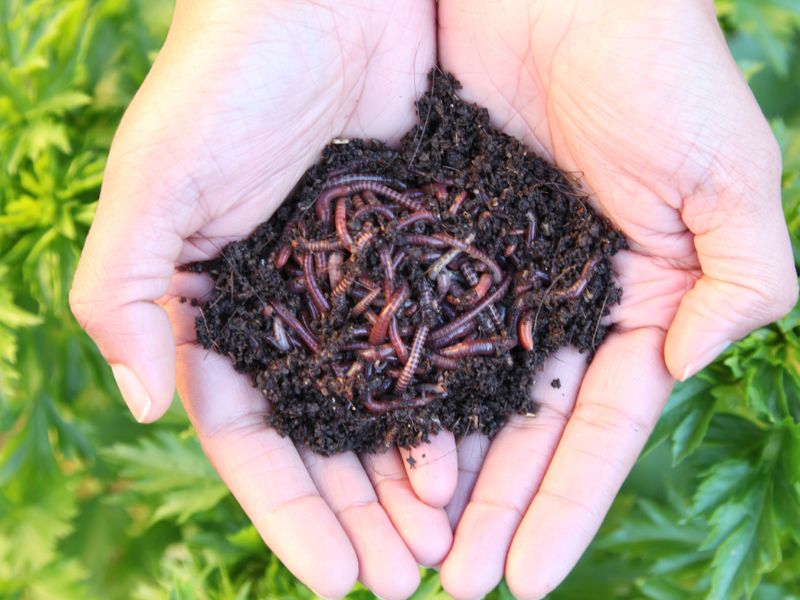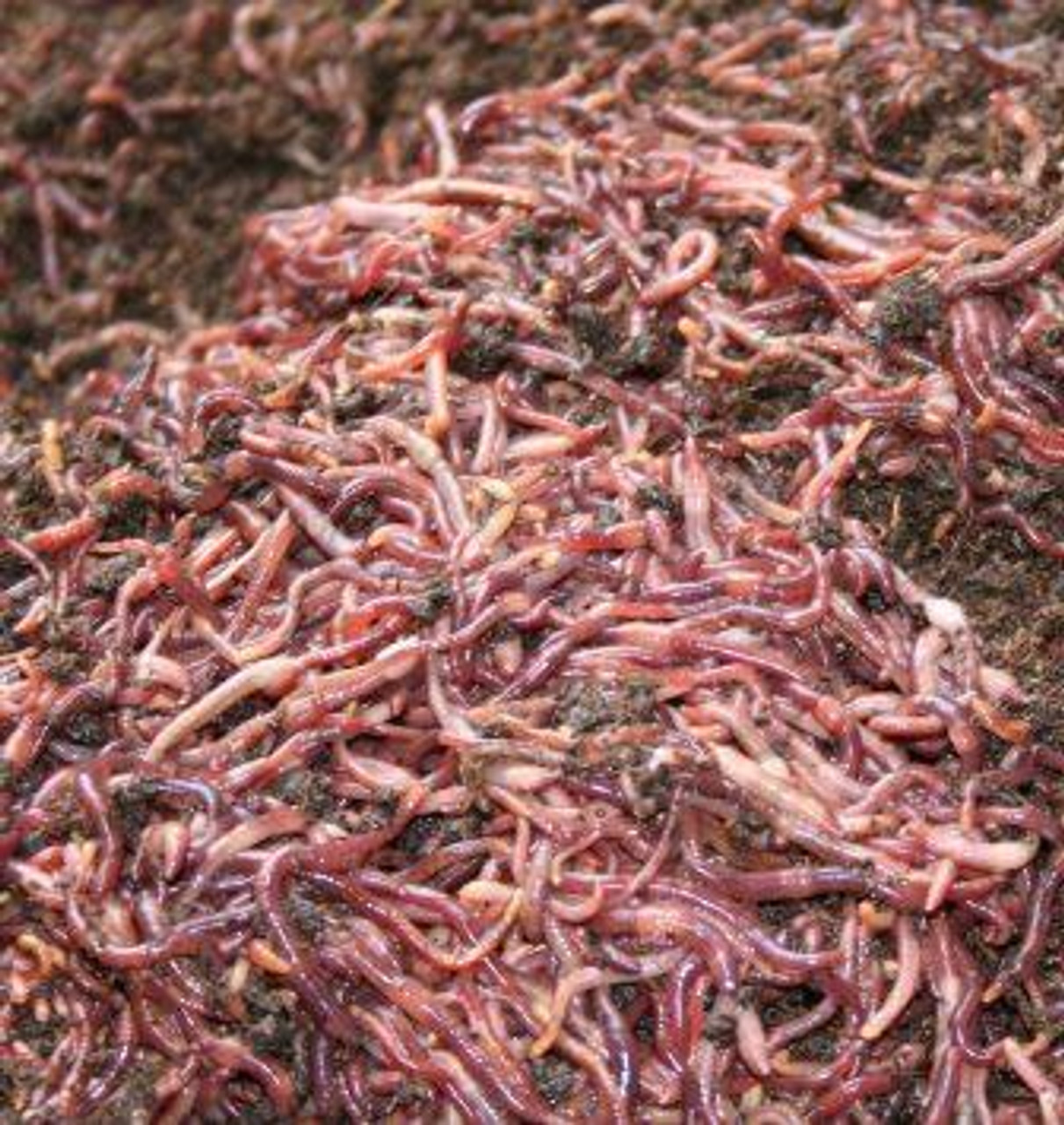Grasping Red Wiggler Composting: Necessary Practices for Healthy And Balanced Composting
Grasping Red Wiggler Composting: Necessary Practices for Healthy And Balanced Composting
Blog Article
Exploring the Devices of Red Wiggler Composting: A Comprehensive Overview to the Refine and Its Favorable Impact on Sustainable Horticulture Practices
The elaborate devices of red wiggler composting, using the unique physiology of Eisenia fetida, present an engaging avenue for boosting sustainable horticulture methods. As city gardening gains grip, comprehending the nuances of this composting method becomes progressively pertinent.
Comprehending Red Wigglers
Red wigglers, medically referred to as Eisenia fetida, are a types of earthworm very related to for their performance in composting organic waste. These worms prosper in nutrient-rich settings, particularly in decaying raw material, making them suitable for vermicomposting systems - Red Wiggler Composting. Identified by their reddish-brown coloration and segmented bodies, red wigglers are smaller sized than usual earthworms, usually gauging in between 3 to 4 inches in length
Their distinct physical characteristics enhance their composting capabilities; for circumstances, they possess a high reproductive price, enabling populaces to multiply swiftly under suitable conditions. Red wigglers take in natural material, damaging it down via their digestive system systems, which causes nutrient-rich castings that work as a superb natural plant food. Their voracious cravings allows them to process huge quantities of food waste efficiently, significantly lowering land fill payments.
Along with their composting prowess, red wigglers play a vital function in soil health and wellness. Red Wiggler Composting. They freshen the soil and promote the decay of raw material, additional enhancing the soil ecological community. Comprehending the characteristics and ecological advantages of red wigglers is necessary for anyone seeking to carry out lasting horticulture practices with reliable composting methods
The Composting Process
The composting procedure includes breaking down natural materials into nutrient-rich garden compost, a job that red wigglers excel at because of their specialized digestion systems. These worms eat food scraps, backyard waste, and other natural issue, transforming them right into valuable compost through a collection of biological and chemical procedures.
At first, the natural matter is combined with bed linen materials such as shredded paper or dried leaves, producing an optimal setting for the worms. As the red wigglers consume this blend, they simplify through their intestine, where bacteria even more decompose the material. This procedure produces heat, advertising microbial activity, which speeds up decomposition.

Benefits of Red Wiggler Composting
Numerous garden enthusiasts and eco-conscious individuals identify the various benefits of red wiggler composting, making it a prominent selection for efficient waste monitoring. One of the main advantages is its ability to dramatically lower natural waste in landfills - Red Wiggler Composting. Red wigglers effectively damage down kitchen scraps and various other naturally degradable materials, transforming them into nutrient-rich vermicompost that improves soil health
Moreover, red wiggler composting enhances soil framework and fertility. The resulting vermicompost is teeming with helpful microorganisms, click for info which promote plant growth and improve nutrient retention. This all-natural fertilizer not only sustains sustainable gardening techniques but additionally minimizes reliance on chemical plant foods, fostering a healthier environment.
In addition, red wiggler composting is a space-efficient method, making it suitable for urban garden enthusiasts with minimal room. The process can be carried out indoors or outdoors, permitting for year-round composting no matter of environment conditions. In addition, red wigglers are low-maintenance microorganisms that call for minimal treatment, making them easily accessible for novice gardeners.
Essentially, the advantages of red wiggler composting prolong past waste reduction; they add to healthier dirts, sustainable gardening practices, and ecological stewardship, positioning it as a valuable method in modern gardening.
Ideal Practices for Composting
For effective red wiggler composting, sticking to best methods is important to make best use of performance and make certain an efficient setting for these worms. This equilibrium promotes optimum decay and enhances the worms' wellness.
Following, monitor moisture levels, going for a wet, sponge-like uniformity. Excessively wet problems can bring about anaerobic decomposition, while too much dryness may hinder worm task. Additionally, make sure appropriate oygenation by transforming the compost on a regular basis, which assists avoid compaction and enables adequate oxygen circulation.
Temperature is an additional crucial aspect. Keep a range of 55 ° F to 77 ° F(13 ° C to 25 ° C) to advertise worm activity and microbial development. Lastly, avoid presenting meat, milk, and oily foods, as these can attract bugs and develop smells.
Enhancing Lasting Horticulture
Sustainable gardening embodies an all natural technique that balances environmental principles with useful horticulture strategies. By including techniques such as red wiggler composting, garden enthusiasts can substantially improve their techniques, promoting a much more durable environment. Red wigglers, renowned for their effective disintegration abilities, convert natural waste right into nutrient-rich compost, thus improving the soil without relying on chemical fertilizers.
Carrying out lasting horticulture methods, such as plant turning, companion planting, and mulching, additional matches the benefits of composting. These techniques not just improve soil structure and fertility however additionally promote biodiversity, drawing in useful bugs and microorganisms that add to grow health. Making use of see this page indigenous plants can lower water intake and reduce upkeep, lining up with water conservation efforts.

Final Thought
Finally, red wiggler composting stands for a crucial approach for improving lasting gardening methods. The efficient digestion of natural waste by Eisenia fetida not only produces nutrient-rich vermicompost yet also fosters improved soil health and framework. By promoting cardio decay, this method decreases smells and waste while decreasing dependency on chemical fertilizers. Inevitably, the fostering of red wiggler composting can dramatically contribute to green horticulture, benefitting both city and novice gardeners in their growing efforts.
The elaborate mechanisms of red wiggler composting, making use of the special physiology of Eisenia fetida, present an engaging avenue for improving lasting horticulture practices. Understanding the features and environmental advantages of red wigglers is crucial for anybody looking to carry out lasting gardening techniques via effective composting methods.

In verdict, red wiggler composting stands for a crucial approach for boosting sustainable gardening practices. Eventually, the fostering of red wiggler composting can dramatically page contribute to eco-friendly horticulture, profiting both urban and amateur gardeners in their farming initiatives.
Report this page